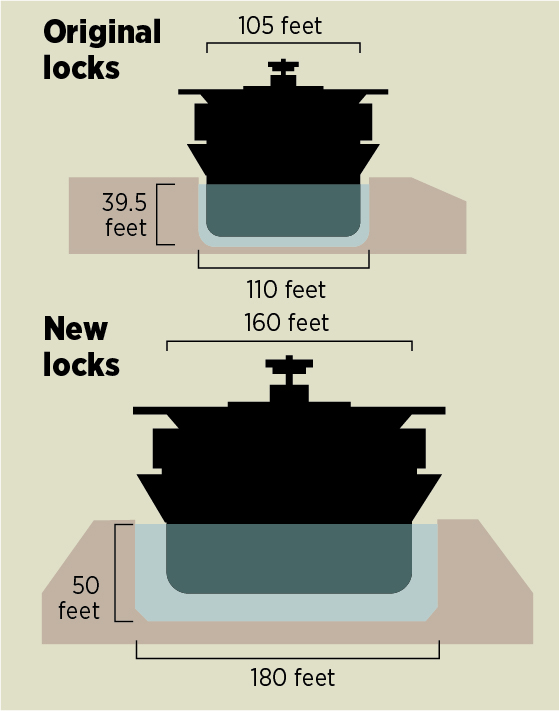
The Big Dig: The story of connecting the Atlantic and Pacific ocean
In 1902, Congress authorized the U.S. to take over and complete a failed French project to build a canal connecting the Atlantic and Pacific oceans through the Columbian isthmus of Panama.
The project would cost $375 million and more than 25,000 lives from accidents and tropical diseases.
The Panama Canal opened for business on Aug. 15, 1914: 110 years ago today.
Connecting Two Oceans, 50 Miles Apart
Feb. 1, 1881
A French company hires Ferdinand de Lesseps, builder of the Suez Canal in Egypt, to build a canal through the Colombian Isthmus of Panama. The 50-mile-long canal is expected to take 12 years to build and cost $132 million. Digging begins the next year.
December 1888
With $287 million spent, 20,000 workers dead — mostly from yellow fever — and only 11 miles of canal in place, the French company fails. Thousands of small investors who thought the canal was a sure bet lose their money.
1901
At the urging of U.S. shipping interests, President Theodore Roosevelt gets serious about building a canal in Central America. Roosevelt forges an agreement with Britain to build a U.S.-controlled canal through either Nicaragua or the Panamanian isthmus
June 28, 1902
The U.S. pays $40 million for the rights to the French project and to the equipment that had been abandoned at the site. The Roosevelt administration begins negotiating with the Colombian government for a treaty to build a canal.
July 1903
Put off by the poor terms, the Colombian government cuts off negotiations with the U.S. Roosevelt launches a Plan B, making a deal with business interests on the isthmus to break away from Colombia and form the new country of Panama.
The U.S. doesn’t just fund a revolution there — it actively stacks the deck against Colombia. Colombian soldiers in Colón are paid $50 each to lay down their arms and not attack separatist interests. The Navy gunboat USS Nashville stands guard to prevent a naval assault by Colombia on Panama City.
Nov. 3, 1903
The Hay-Bunau-Varilla Treaty results in the birth of the country of Panama. The U.S. pays Panama $10 million upfront and $250,000 per year for the rights to build the canal and to own and control forever the canal and a 10-mile-wide strip across the country.
1905
Realizing that success in building the canal will first require eradicating yellow fever in the region, chief engineer John Stevens brings in the world’s foremost expert on the disease, Dr. William Gorgas. Swamps are drained, roads are paved, plumbing is installed. The regional death toll plummets.
November 1906
The original plan by de Lesseps for a sea-level canal has been abandoned for a complex series of locks to raise ships to an artificial lake 85.3 feet above sea level and then back down again. With construction making tremendous progress, Roosevelt visits the work site, becoming the first sitting U.S. president to travel abroad.
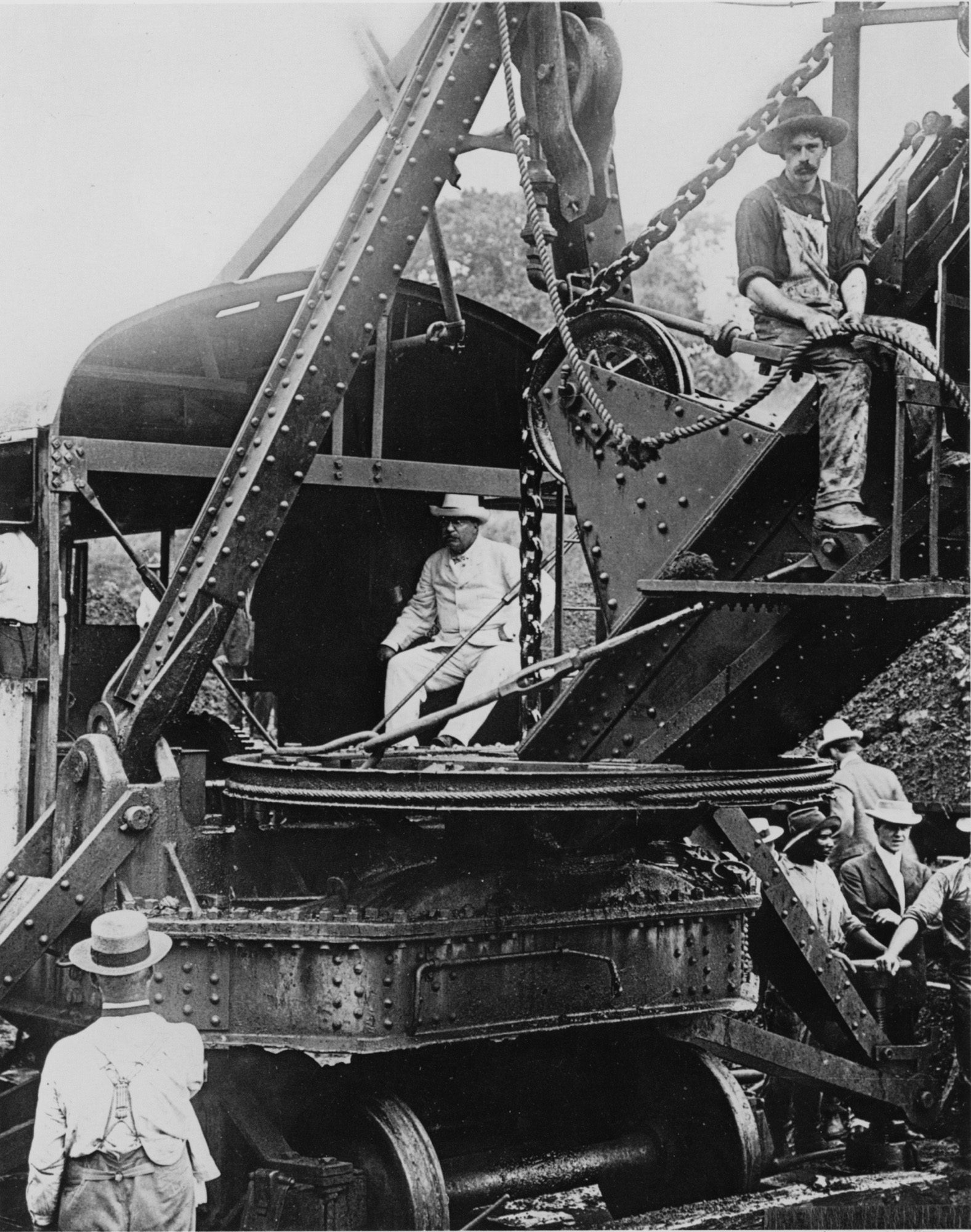
U.S. President Theodore Roosevelt tests a steam shovel at the Culebra Cut in November 1906.
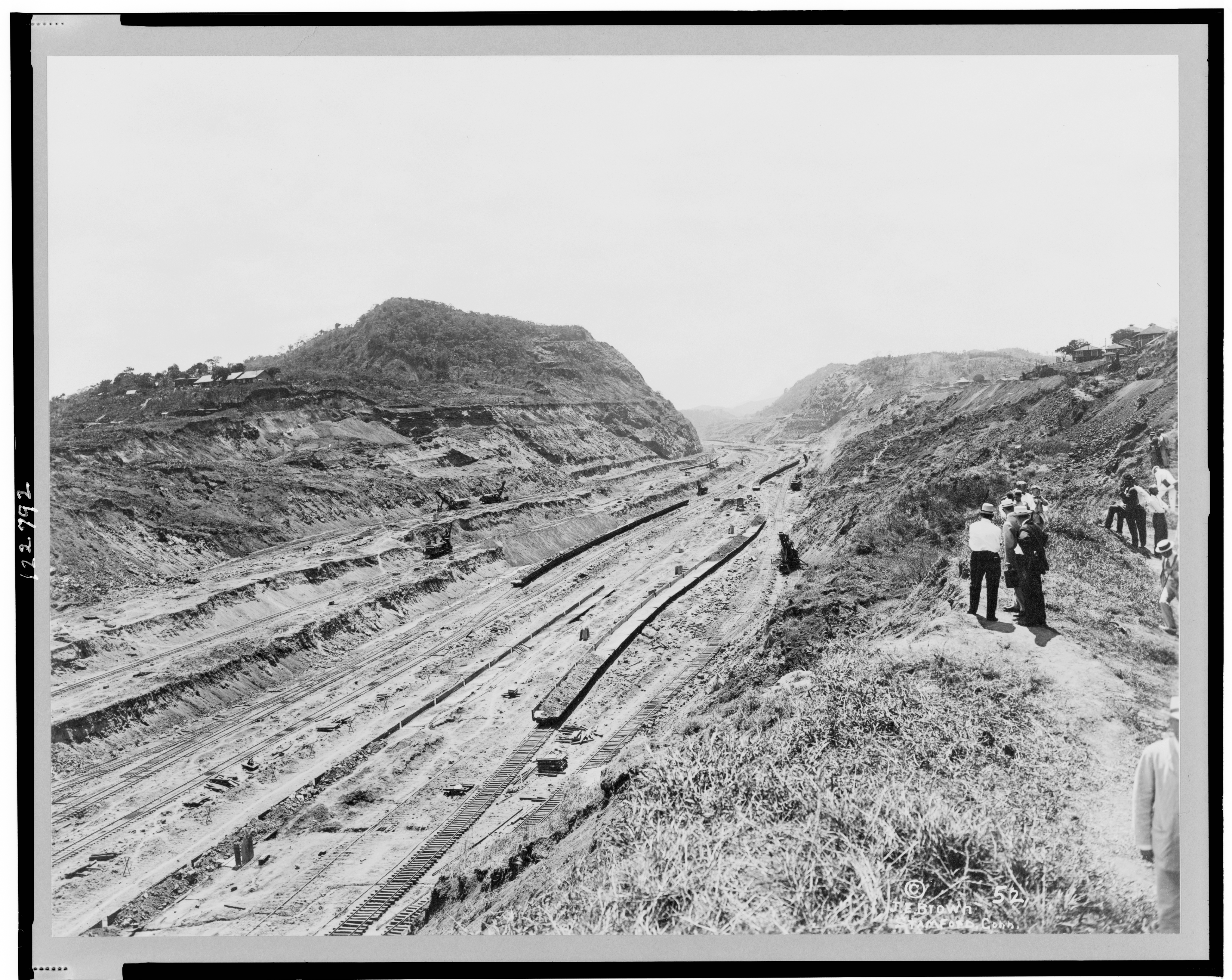
The Culebra Cut sliced 7.8 miles through the Continental Divide, linking Gatun Lake to the Pacific Ocean. Here''s how far construction had progressed by June 13, 1912.
1913
Steam shovels finally break through Culebra Cut, the highest point of the canal route, from which 100 million cubic yards of earth are moved. By September, the first set of locks on the Atlantic side of the canal is ready for testing.
Aug. 15, 1914
The canal finally opens for business. The first official canal transit is made by the U.S. passenger and cargo ship SS Ancon.
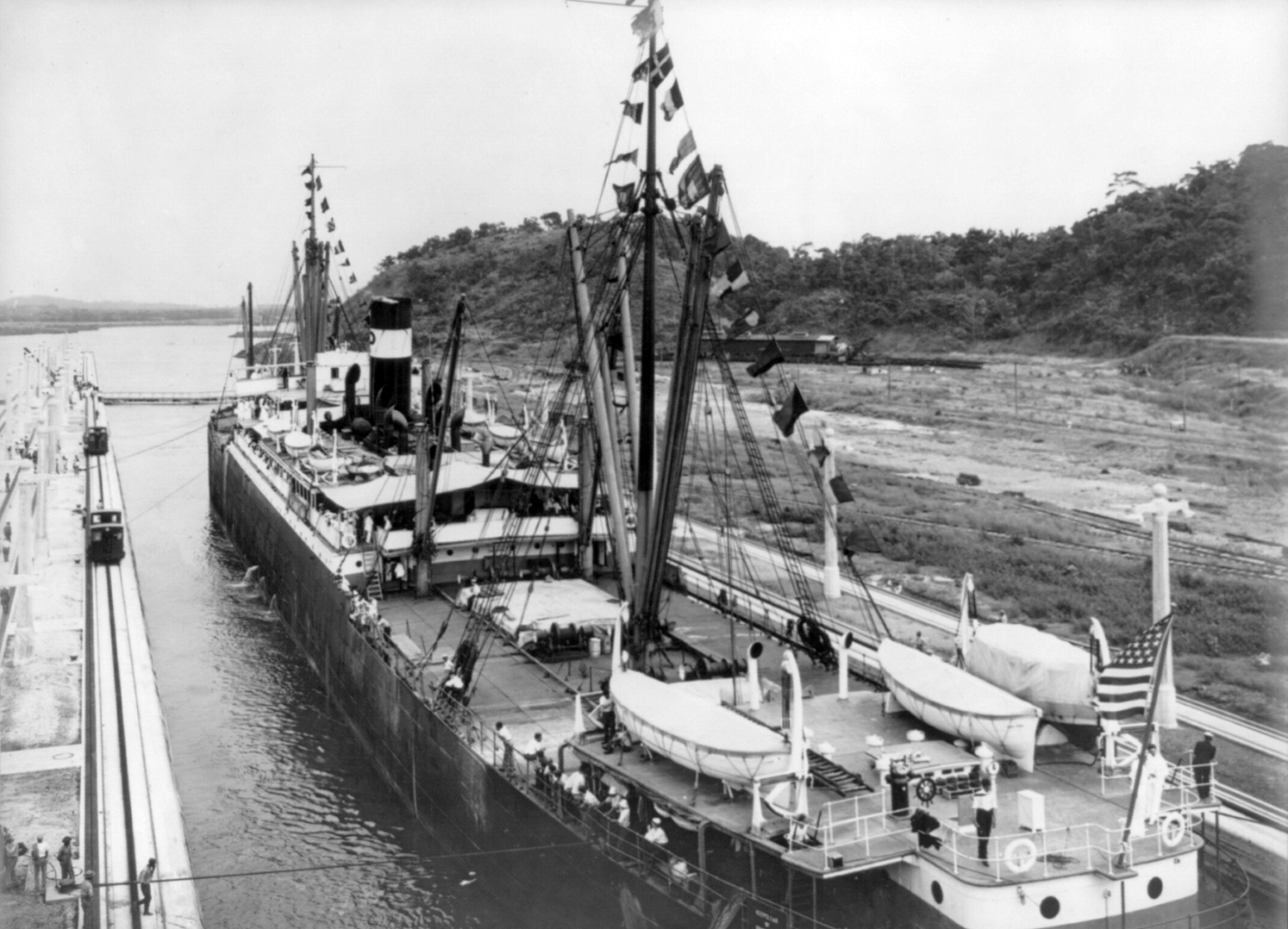
The S Ancon on Aug. 15, 1914, christening the Panama Canal with its first passage.
April 20, 1921
The U.S. Senate approves a plan to make a $25 million cash payment to Colombia for the loss of Panama.
1940
An ambitious plan to enlarge the locks of the canal to accommodate larger ships is abandoned after nearly two years of work.
Sept. 5, 1977
President Jimmy Carter signs the Panama Canal treaties that will give control of the canal to Panama. Opponents criticize him for “giving away our canal.”
Dec. 31, 1999
The U.S. officially completes its withdrawal from its Canal Zone.
September 2007
Work begins to update the Panama Canal with a new, third set of locks — designed to accommodate larger container vessels.
June 26, 2016
Expansion of the Panama Canal is completed.
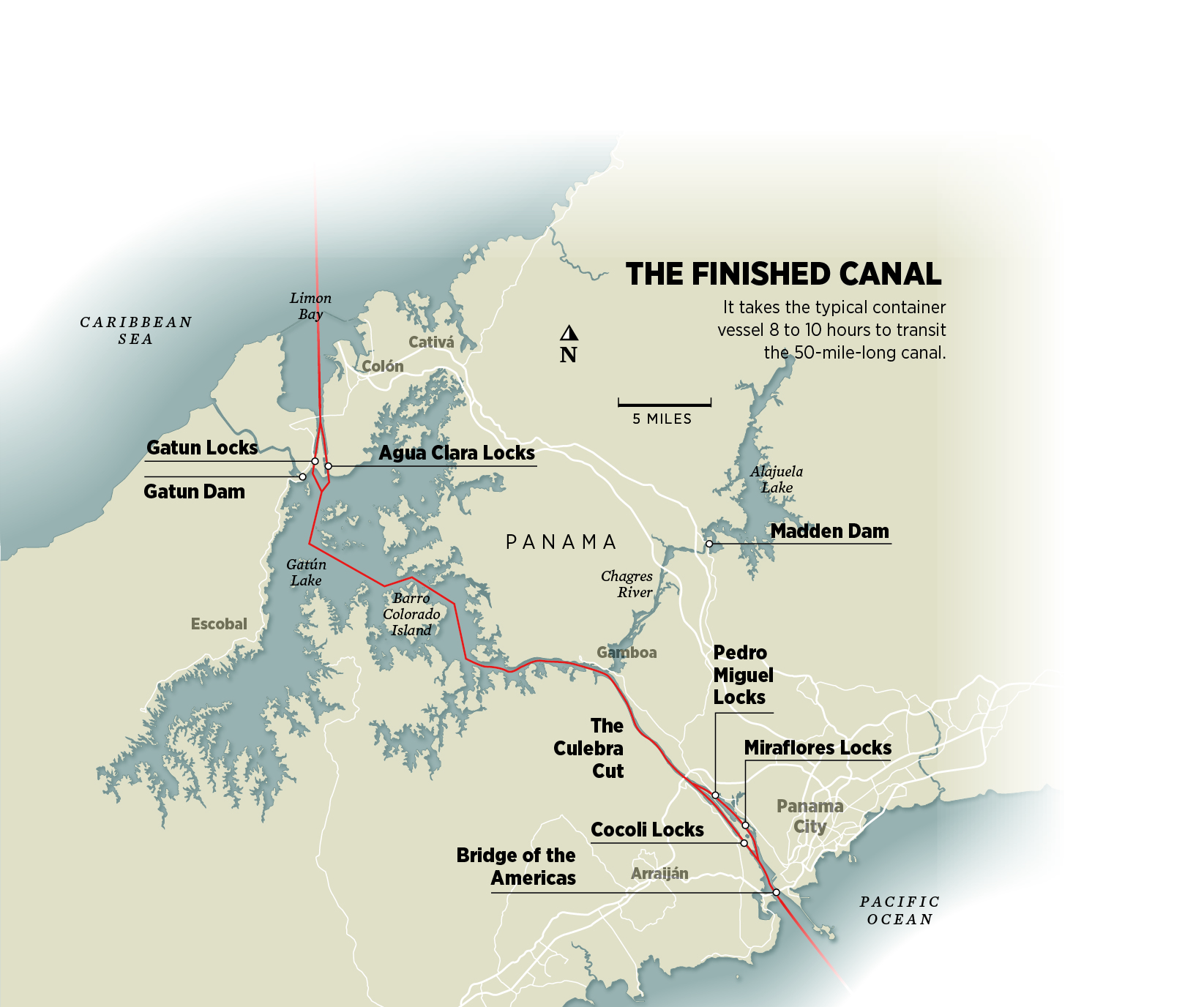
A Needed Update
In 2007, the canal was updated so it could accommodate the ever-growing container ships. Two new sets of locks were built, channels were widened and deepened and the water level of Gatun Lake was raised.
